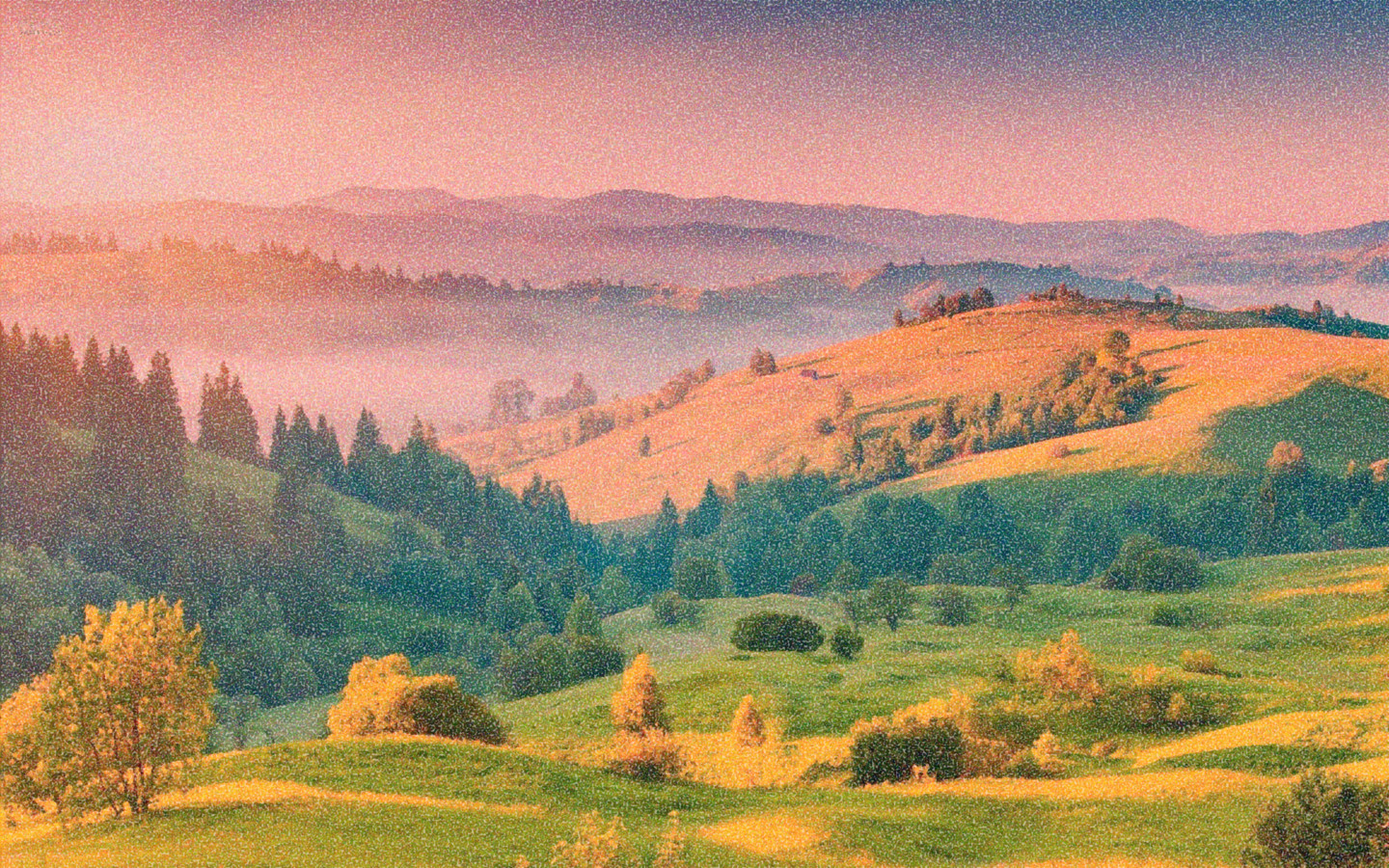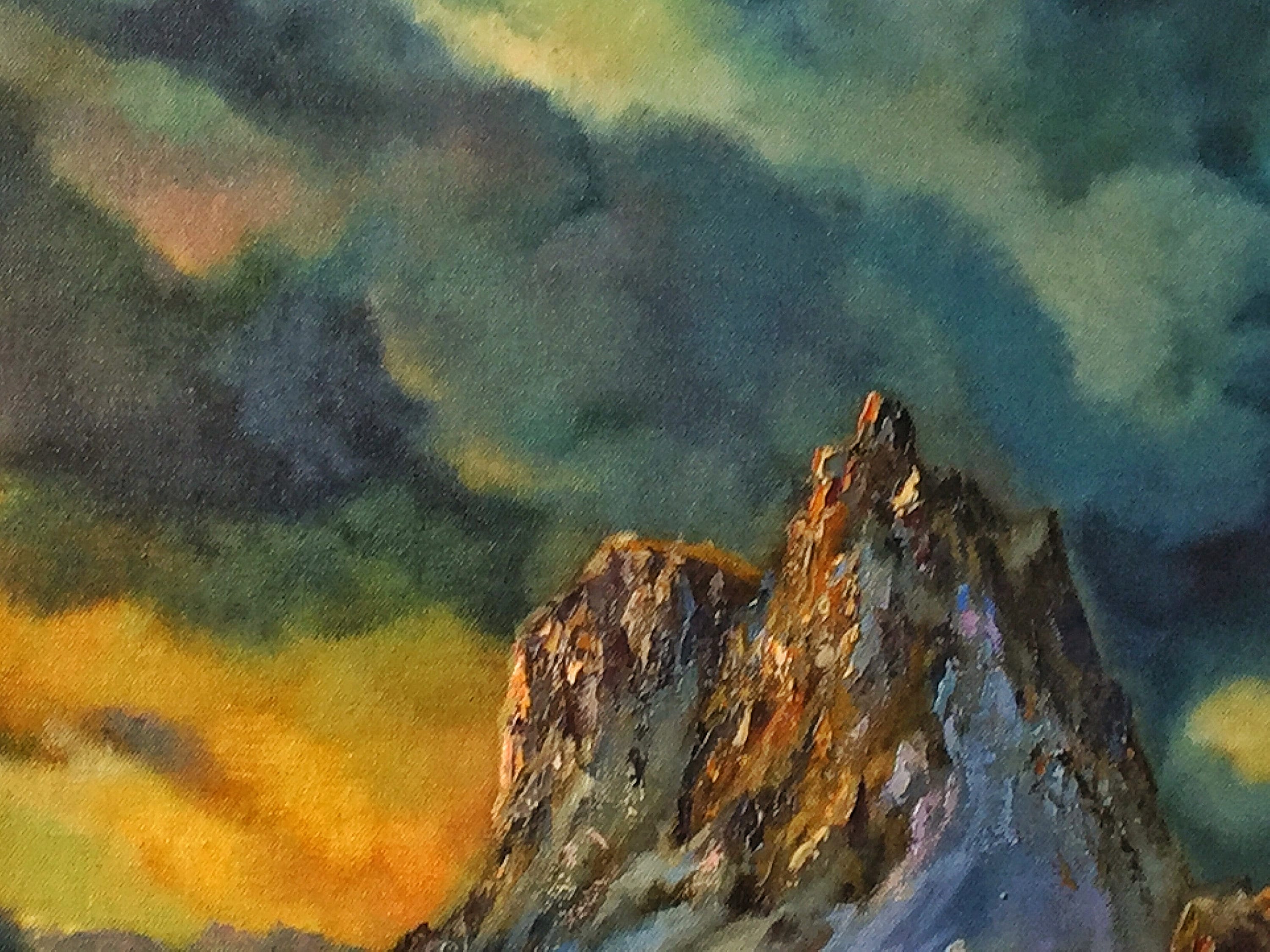
Of the remaining categories: “Constructed Realities,” with Inka Essenhigh, Mark Tansey and Vincent Desiderio, offers the greatest variety of style and sensibility, while “Abstracted Topographies,” with Julie Mehretu, Cecily Brown, and Ali Banisadr, emphasize the book’s thesis regarding abstraction. The third, “New Romanticism,” concentrates on painting rooted in history, folk tradition and other subtexts, the signature artist being Anselm Kiefer. “Post-Pop Landscapes” relies on the color intensity favored by David Hockney, Yvonne Jacquette, and Matthew Wong. “Realism and Beyond” includes Lois Dodd, Rackstraw Downes, and April Gornik, among others. The first two categories are conventional. Lois Dodd, “Winter Sunset, Blair Pond” (2008), oil on linen, 48 x 52 inches (Private Collection ©Lois Dodd, courtesy Alexandre Gallery, New York) Of the 82 painters included, Alex Katz and Lois Dodd are the oldest at 92, Matthew Wong the youngest at 35, a range indicating an admirable determination to peel back overlapping generational influences, while limiting the selected work, as the title word “now” suggests, to canvases completed in the new century. To allay the fear many potential readers may entertain that the whole enterprise is a cynical touting of hot young things, I can report that the average age of the artists chosen for inclusion calculates to 60. As the author notes, there are quite a few artists that could occupy categories other than the one they were assigned. The choice of who occupies each category is sometimes obvious, other times eccentric. Each of the six groupings includes a dozen artists or more. Though debatable, the categories bring an exuberance to the revelatory chaos the subject predictably generates.


In attending to the sensibilities of art lovers who hold, as Schwabsky puts it, “a clichéd and outdated notion of what landscape painting is and isn’t”, his introductory essay follows a slender thread of historical indicators expanded upon in the book’s groupings of artists into six categories, each explored in its own chapter. Makiko Kudo, “Insomnia” (2010), oil on canvas, 71.62 x 89.37 inches, ©Makiko Kudo, Courtesy of Tomio Koyama Gallery, photo by Ikuhiro Watanabeīy 1965, and for several decades afterward, conceptual, performance, installation and earth art dominated art criticism, while painters working outside recognized movements like Pop, Minimalism, New Image, Bad Painting (yes, that was once a thing), Neo-Geo, and Neo-Expressionism, were finding ways, as Schwabsky puts it, “to grapple with transformations both in the art of painting and in the conditions of life from which that art could emerge.” In short, abstraction and spontaneity remained fundamental to painting, even for landscape painters, which explains the wide variety in the book’s roster of artists.

This was to prove a link that only painters noticed. Three-hundred and sixty-eight pages beckon a leisurely read, spreading generous reproductions across six interpretive categories, each meant to expand on notions, suggested - unsurprisingly for a commentary on a wanderer’s art form - in a rambling introductory essay, the gist of which is that abstraction’s mid-century zenith marked, as Robert Rosenblum noted at the time, a revealing link between Abstract Expressionist painters like Mark Rothko and Clyfford Still and 19 th century Romantics. With a specific focus on paintings completed since 2000, a view unfolds of a genre that earned only sporadic attention from critics while its practitioners were busy expanding, redefining, and generally complicating the form.
#Landscape painting update
Van Scoy, Schwabsky sets out to update readers on what artists have been doing with the pliable clay of landscape painting since 1950. Along with editor Todd Bradway and historians Robert R. Landscape Painting Now: From Pop Abstraction to New Romanticism, by Barry Schwabsky (DAP, April 2019)Īrt critic Barry Schwabsky’s new book, Landscape Painting Now: From Pop Abstraction to New Romanticism (DAP), delivers a global and multi-generational perspective on what may be the most malleable of painting genres.


 0 kommentar(er)
0 kommentar(er)
